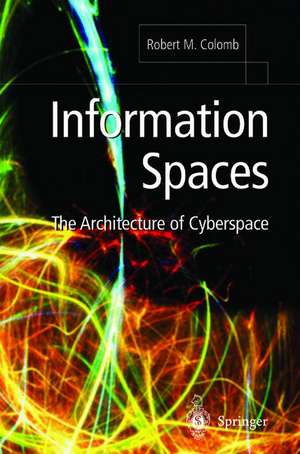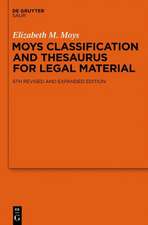Information Spaces: The Architecture of Cyberspace
Autor Robert M. Colomben Limba Engleză Paperback – mar 2002
Preț: 390.08 lei
Nou
Puncte Express: 585
Preț estimativ în valută:
74.67€ • 81.13$ • 62.76£
74.67€ • 81.13$ • 62.76£
Carte tipărită la comandă
Livrare economică 21 aprilie-05 mai
Preluare comenzi: 021 569.72.76
Specificații
ISBN-13: 9781852335502
ISBN-10: 1852335505
Pagini: 268
Ilustrații: XVI, 256 p. 97 illus.
Dimensiuni: 155 x 235 x 14 mm
Greutate: 0.46 kg
Ediția:2002
Editura: SPRINGER LONDON
Colecția Springer
Locul publicării:London, United Kingdom
ISBN-10: 1852335505
Pagini: 268
Ilustrații: XVI, 256 p. 97 illus.
Dimensiuni: 155 x 235 x 14 mm
Greutate: 0.46 kg
Ediția:2002
Editura: SPRINGER LONDON
Colecția Springer
Locul publicării:London, United Kingdom
Public țintă
Lower undergraduateCuprins
Introduction.- Overview.- Text retrieval.- Describing information objects.- Browsing - hypertext.- World Wide Web.- Structured documents - XML.- Controlled vocabulary.- Semantic dimensions.- Classification in context.- Large classification systems.- Descriptors.- Visualisation.- Archiving.- Quality.- Appendices.- Index.
Caracteristici
Approaches the subject from the information space perspective rather than from a pure computer science perspective The proliferation of documents on the web makes accessing difficult; this is a timely book showing non-information professionals how to structure information Most available texts on organising information are aimed at the information scientist/library professional, and do not cover the practical aspects of building the system This book combines both organising information, and building the systems in an accessible text Includes supplementary material: sn.pub/extras



